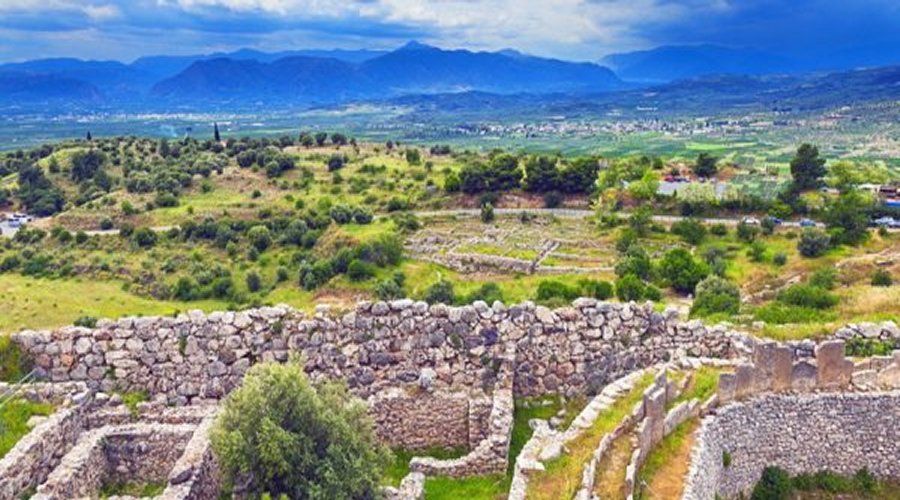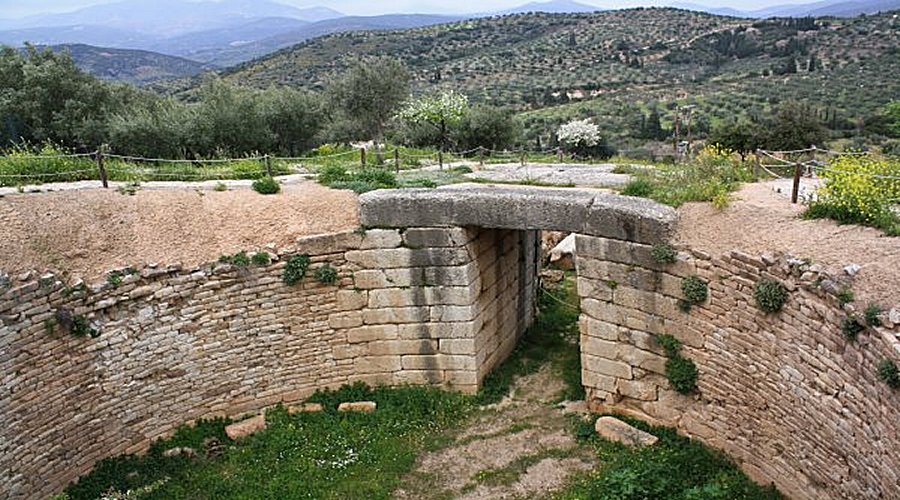MessageToEagle.com – It is said that Agamemnon king of Mycenae, first sung by Homer in his epics, gave its name to one of the greatest civilizations of Greek prehistory – the Mycenaean civilization, famous for its majestic architecture and imposing monuments.
Mycenae, one of the most important archaeological sites in Greece, is located about 90 km southwest of Athens, in the north-eastern Peloponnese.

The most important and richest palatial center of the Late Bronze Age in Greece, Mycenae has inspired poets and writers over many centuries. Built between two tall hills, on a low plateau overlooking the Argive plain, the centre’s strategic location allowed it to develop into a military stronghold which dominated much of Southern Greece.
The construction of the palace and fortification wall currently visible began c. 1350 BC.
A new wall was erected to the west and south of the early one approximately one hundred years later, together with the Lion Gate, the citadel’s monumental entrance, and its bastion.

Included in the newly fortified area was the city’s religious center.
The famous tholos tomb known as the ‘Treasure of Atreus’, with its gigantic lintels and tall beehive vault, was probably built during the same period.
Successive destructions and fires led to the site’s final abandonment c. 1100 BC. After the collapse of the palatial system the hill was sparsely inhabited until the Classical period.
In the eighteenth and nineteenth centuries, the impressive Cyclopean walls of the Mycenaean acropolis attracted many travelers and some of them even looted the site, taking advantage of the indifference of the Turkish authorities.
Agamemnon was the son of king Atreus and queen Aerope of Mycenae, the brother of Menelaus, the husband of Clytemnestra and the father of Iphigenia, Electra or Laodike Orestes and Chrysothemis.
Mythical legends make him the king of Mycenae or Argos, thought to be different names for the same area. When Helen, the wife of Menelaus, ran off with Paris of Troy, Agamemnon commanded the united Greek armed forces in the ensuing Trojan War.
Upon Agamemnon’s return from Troy, he was murdered (according to the oldest surviving account, Odyssey 11.409-11) by Aegisthus, the lover of his wife, Clytemnestra. In old versions of the story, “the scene of the murder, when it is specified, is usually the house of Aegisthus, who has not taken up residence in Agamemnon’s palace, and it involves an ambush and the deaths of Agamemnon’s followers too”.
In some later versions Clytemnestra herself does the killing, or they do it together, in his own home.
Celebrated artefacts from Mycenae include five magnificent beaten gold burial masks (one being incorrectly attributed to Agamemnon by Schliemann), gold diadems, carved rings, cups and a lion head rhyton.
A magnificent bronze and gold rhyton in the form of a bull’s head, large bronze swords and daggers with richly inlaid scenes on their blades, ivory sculpture and fragments of fresco also give testimony to the quality of craftsmanship and wealth of ‘golden Mycenae’.
MessageToEagle.com
source: Protothema






